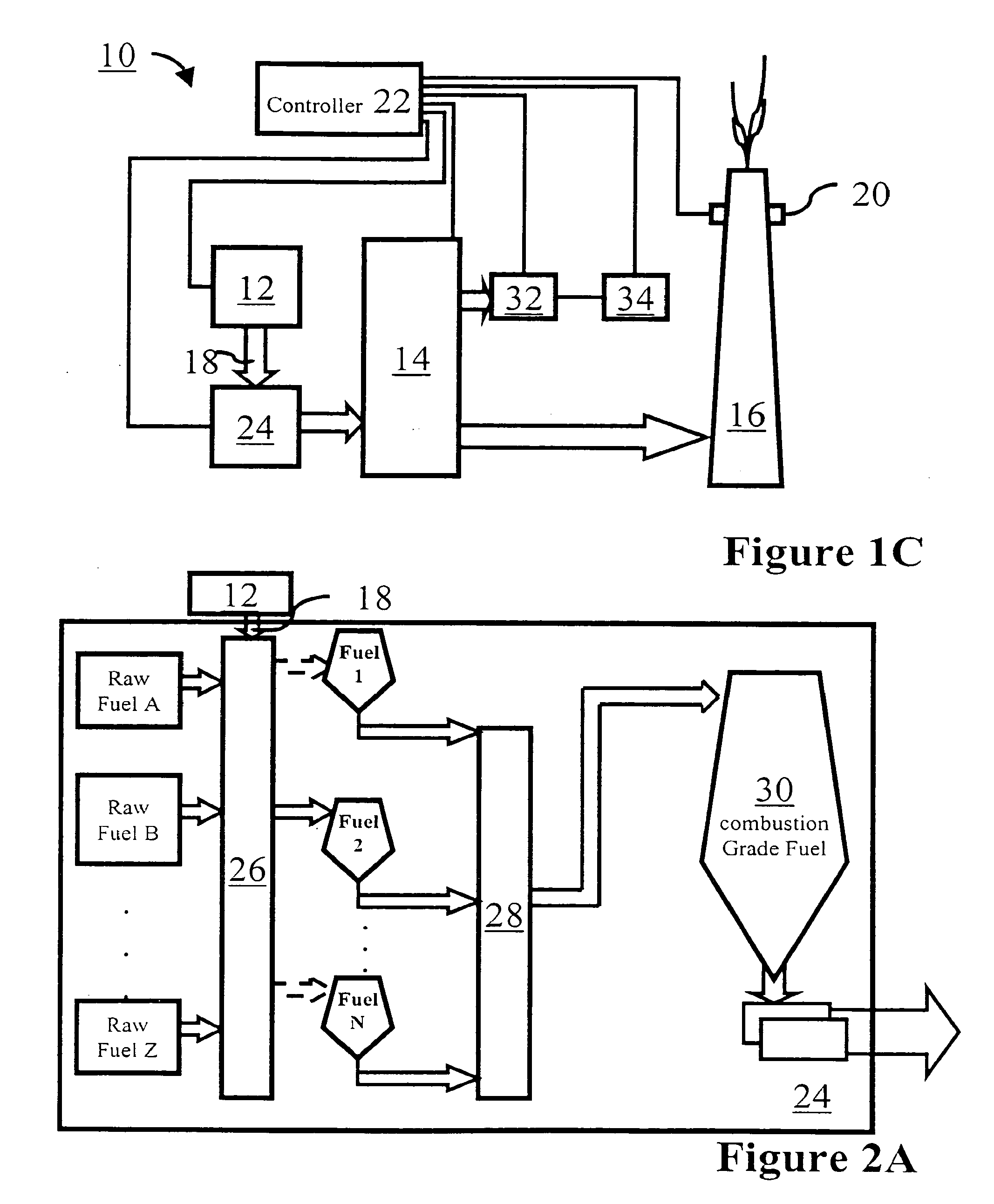Preparation of fuel usable in a fossil-fuel-fired system
a technology of fossil fuel and fuel, which is applied in the field of reducing emissions of fossil fuelfired systems, can solve the problems of reducing the performance of the esp, limiting the strength of the electrostatic field, and emitted high-polluting flue-gas streams into the atmosphere of fossil-fuel-fired furnaces, so as to reduce the opacity of the flue-gas, the effect of reducing the emission
- Summary
- Abstract
- Description
- Claims
- Application Information
AI Technical Summary
Benefits of technology
Problems solved by technology
Method used
Image
Examples
example 1
[0083]The superabsorbent is applied to coal prior to processing the coal by a ball mill to have a size of 1 to 10 mm. The mix is pulverized and carried, entrained in air from the pulverizes, as a fuel into the combustion chamber of a power station boiler. There is no evidence of clogging of the pulverizer or other parts of the apparatus through which the product travels from the mixer to the boiler. It was found that the emissions of the boiler were reduced.
example 2
[0084]A pilot test was performed at Hoosier Energy REC, Inc.'s Ratts Generating Station in Pike County, Indiana. The coal-fired facility is able to produce 250,000 kilowatts of electricity with twin turbine generators. The generating station is equipped with environmental controls and monitors; these include precipitators for the removal of flyash. Most of the fuel for the facility is Indiana coal with moderate sulfur content burned at about 12,000 BTU per pound and mined within a radius of 20 miles of the generating station.
TABLE 5ENVIROSORB 1880 Technical DataRetention Capacity (Test Method Nr. Q3T013):28.5-35.0g / gAbsorbency Under Load, [0.9 psi] (Test18.0g / g min.Method Nr. Q3T027):Particle Size: 100-850 microns (TestMethod Nr. Q3T015)% on 20 Mesh [850 μm]2.0%Max.% on 50 Mesh [300 μm]95%Max.% on 100 Mesh [150 μm]30%Max.% thru 100 Mesh [150 μm]3%Max.Apparent Bulk Density (Test530-725g / lMethod Nr. Q3T014):Moisture Content (Test Method Nr. Q3T028):5.0%MaxResidual Monomer (Test Method...
PUM
 Login to View More
Login to View More Abstract
Description
Claims
Application Information
 Login to View More
Login to View More - R&D
- Intellectual Property
- Life Sciences
- Materials
- Tech Scout
- Unparalleled Data Quality
- Higher Quality Content
- 60% Fewer Hallucinations
Browse by: Latest US Patents, China's latest patents, Technical Efficacy Thesaurus, Application Domain, Technology Topic, Popular Technical Reports.
© 2025 PatSnap. All rights reserved.Legal|Privacy policy|Modern Slavery Act Transparency Statement|Sitemap|About US| Contact US: help@patsnap.com



